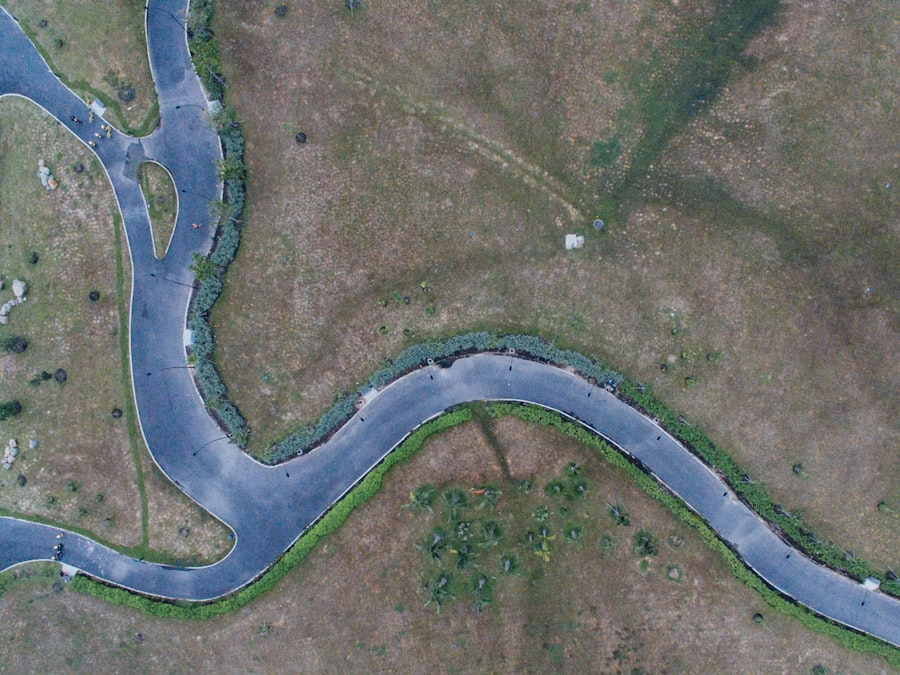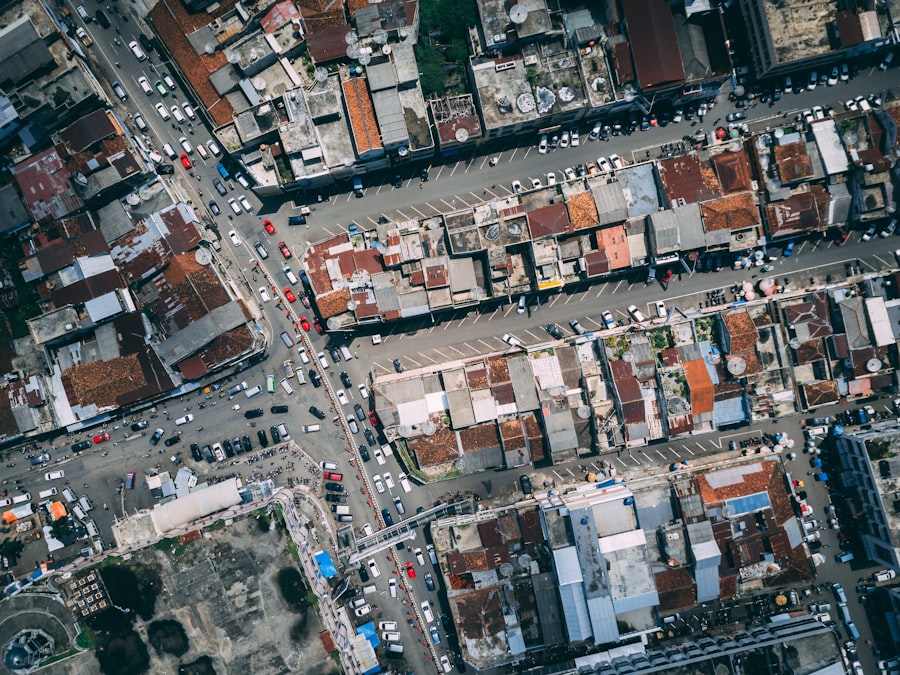The advent of 5G technology marks a significant leap in the evolution of mobile communication, promising unprecedented speed, reduced latency, and enhanced connectivity. Unlike its predecessors, 5G is designed to support a vast array of devices and applications, making it a cornerstone for the Internet of Things (IoT). With theoretical download speeds reaching up to 10 Gbps and latency as low as one millisecond, 5G is not merely an incremental upgrade; it represents a paradigm shift in how data is transmitted and processed.
This new generation of wireless technology operates on a higher frequency spectrum, utilizing millimeter waves that allow for greater bandwidth and more simultaneous connections. The implications of 5G extend far beyond faster internet on smartphones. It is set to revolutionize various sectors, including healthcare, transportation, and entertainment.
In particular, the integration of 5G with drone technology is poised to transform aerial operations, enabling real-time data exchange and advanced functionalities that were previously unattainable. As drones become increasingly prevalent in industries such as agriculture, logistics, and surveillance, the synergy between 5G and drone communication systems will unlock new possibilities for efficiency and innovation.
Key Takeaways
- 5G technology is the next generation of wireless communication, promising faster speeds and lower latency.
- 5G has a significant impact on drone communication, enabling real-time data transmission and enhanced control and navigation capabilities.
- Real-time data transmission is made possible by 5G, allowing drones to send and receive information instantly for improved decision-making.
- Enhanced drone control and navigation are facilitated by 5G, enabling more precise and responsive operation of drones.
- 5G plays a crucial role in autonomous drone operations, providing the connectivity and speed necessary for seamless and efficient autonomous flights.
The Impact of 5G on Drone Communication
The integration of 5G technology into drone communication systems is a game-changer for the industry. Traditional drone operations often rely on radio frequency (RF) communication, which can be limited by range and susceptible to interference. In contrast, 5G offers a robust framework that enhances the reliability and efficiency of drone communications.
With its ability to support a massive number of devices simultaneously, 5G can facilitate seamless communication between multiple drones and ground control stations, allowing for coordinated operations in complex environments. Moreover, the high-speed data transfer capabilities of 5G enable drones to transmit high-definition video and sensor data in real-time. This is particularly beneficial for applications such as search and rescue missions, where timely information can be critical.
The enhanced communication capabilities provided by 5G not only improve operational efficiency but also expand the potential use cases for drones across various sectors.
Real-Time Data Transmission
One of the most significant advantages of 5G technology is its ability to facilitate real-time data transmission. In the context of drone operations, this capability is transformative. Drones equipped with 5G connectivity can send and receive large volumes of data instantaneously, enabling operators to make decisions based on the most current information available.
This is particularly crucial in industries such as agriculture, where drones are used for precision farming. Farmers can receive real-time data on crop health, soil conditions, and weather patterns, allowing them to optimize their operations and respond swiftly to changing conditions. For example, consider a scenario where a drone is deployed to monitor a large agricultural field.
With 5G connectivity, the drone can transmit high-resolution images and sensor data back to the farmer’s mobile device or computer in real-time. This immediate access to information allows the farmer to identify areas that require attention—such as pest infestations or irrigation issues—without delay. The ability to act on real-time data not only enhances productivity but also contributes to more sustainable farming practices by minimizing resource waste.
Enhanced Drone Control and Navigation
The introduction of 5G technology significantly enhances drone control and navigation capabilities. Traditional drone control systems often face limitations due to latency and bandwidth constraints, which can hinder responsiveness and accuracy during flight operations. However, with the ultra-low latency provided by 5G networks, drone operators can achieve near-instantaneous control over their devices.
This is particularly important for applications that require precise maneuvering, such as aerial inspections or delivery services. In practical terms, this means that a drone can be controlled with greater precision even at considerable distances from the operator. For instance, in urban environments where obstacles are abundant, a drone equipped with 5G connectivity can receive real-time updates about its surroundings through advanced sensors and cameras.
This information can be processed quickly, allowing the drone to navigate complex environments safely and efficiently. Furthermore, enhanced navigation capabilities enable drones to operate autonomously in dynamic settings, reducing the need for constant human intervention.
5G’s Role in Autonomous Drone Operations
As industries increasingly turn towards automation, the role of 5G in facilitating autonomous drone operations cannot be overstated. Autonomous drones rely on sophisticated algorithms and machine learning models to make decisions based on environmental data. The high-speed connectivity provided by 5G allows these drones to access cloud-based processing power and vast datasets in real-time, significantly enhancing their operational capabilities.
For example, consider an autonomous delivery drone tasked with transporting medical supplies to remote locations. With 5G connectivity, the drone can continuously analyze data from various sources—such as weather forecasts, air traffic information, and geographical maps—to optimize its flight path dynamically. This level of adaptability not only improves delivery efficiency but also ensures safety by allowing the drone to avoid obstacles or hazardous conditions in real-time.
The integration of 5G technology thus paves the way for more sophisticated autonomous systems that can operate independently while maintaining high levels of safety and reliability.
Overcoming Connectivity Challenges
Infrastructure Development: A Significant Hurdle
One major challenge is the need for extensive infrastructure development to support 5G networks. While urban areas may have relatively robust coverage, rural regions often lack the necessary infrastructure to enable reliable connectivity for drone operations.
Addressing Connectivity Challenges in Remote Areas
This disparity poses challenges for industries that rely on drones in less populated areas, such as agriculture or environmental monitoring. To address these connectivity challenges, innovative solutions are being explored. For instance, companies are investigating the use of satellite-based 5G networks to extend coverage into remote regions where traditional infrastructure is lacking.
Overcoming Connectivity Barriers with Innovative Technologies
Additionally, mesh networking technologies could allow drones to communicate with one another directly, creating a network that extends beyond the limitations of ground-based infrastructure. By overcoming these connectivity barriers, industries can fully leverage the potential of 5G-powered drone communication systems.
Security and Privacy Considerations
As with any technological advancement, the integration of 5G into drone communication raises important security and privacy concerns. The increased connectivity and data transmission capabilities inherent in 5G networks make them attractive targets for cyberattacks. Drones often collect sensitive information—such as surveillance footage or agricultural data—which could be compromised if proper security measures are not implemented.
To mitigate these risks, robust encryption protocols and secure communication channels must be established for drone operations utilizing 5G technology. Additionally, regulatory frameworks need to evolve alongside technological advancements to ensure that privacy concerns are addressed adequately. For instance, guidelines governing the use of drones for surveillance purposes should be developed to protect individuals’ rights while still allowing for legitimate use cases such as law enforcement or disaster response.
The Future of 5G-Powered Drone Communication Networks
Looking ahead, the future of 5G-powered drone communication networks appears promising as industries continue to explore innovative applications for this technology. The potential for enhanced efficiency and productivity across various sectors is immense. As more businesses recognize the benefits of integrating drones into their operations—whether for logistics, agriculture, or infrastructure inspection—the demand for reliable and high-speed communication networks will only grow.
Furthermore, advancements in artificial intelligence (AI) and machine learning will likely complement the capabilities offered by 5G technology. Drones equipped with AI algorithms will be able to analyze data more effectively and make autonomous decisions based on real-time information received through 5G networks. This synergy between AI and 5G will drive further innovation in drone applications, leading to smarter and more efficient aerial systems.
In conclusion, as we stand on the brink of a new era in drone technology powered by 5G connectivity, it is clear that this combination will redefine how we approach aerial operations across various industries. The potential benefits are vast; however, addressing challenges related to infrastructure development, security, and privacy will be crucial in realizing this vision fully. As stakeholders collaborate to harness the power of 5G for drones, we can expect a future where aerial capabilities are limited only by our imagination.
A related article to How 5G Powers Real-Time Drone Communication Networks is “The Best Shared Hosting Services in 2023” from Enicomp. This article discusses the importance of choosing the right hosting provider for your website to ensure optimal performance and reliability. To learn more about hosting services, check out this article.
FAQs
What is 5G technology?
5G technology is the fifth generation of mobile network technology, offering faster speeds, lower latency, and increased capacity compared to previous generations.
How does 5G power real-time drone communication networks?
5G enables real-time communication between drones and their operators by providing high-speed data transmission, low latency, and reliable connectivity, allowing for seamless control and monitoring of drones.
What are the benefits of using 5G for drone communication networks?
The use of 5G technology in drone communication networks allows for improved real-time video streaming, precise control of drones, enhanced safety features, and the ability to support multiple drones simultaneously.
How does 5G improve drone operations?
5G technology enhances drone operations by enabling faster data transfer, more accurate navigation and positioning, and the ability to deploy drones in various industries such as agriculture, construction, and public safety.
What are the challenges of implementing 5G in drone communication networks?
Challenges of implementing 5G in drone communication networks include the need for infrastructure development, regulatory considerations, and ensuring security and privacy of drone data and communications.



